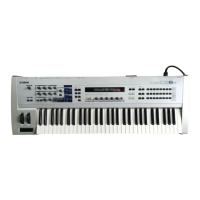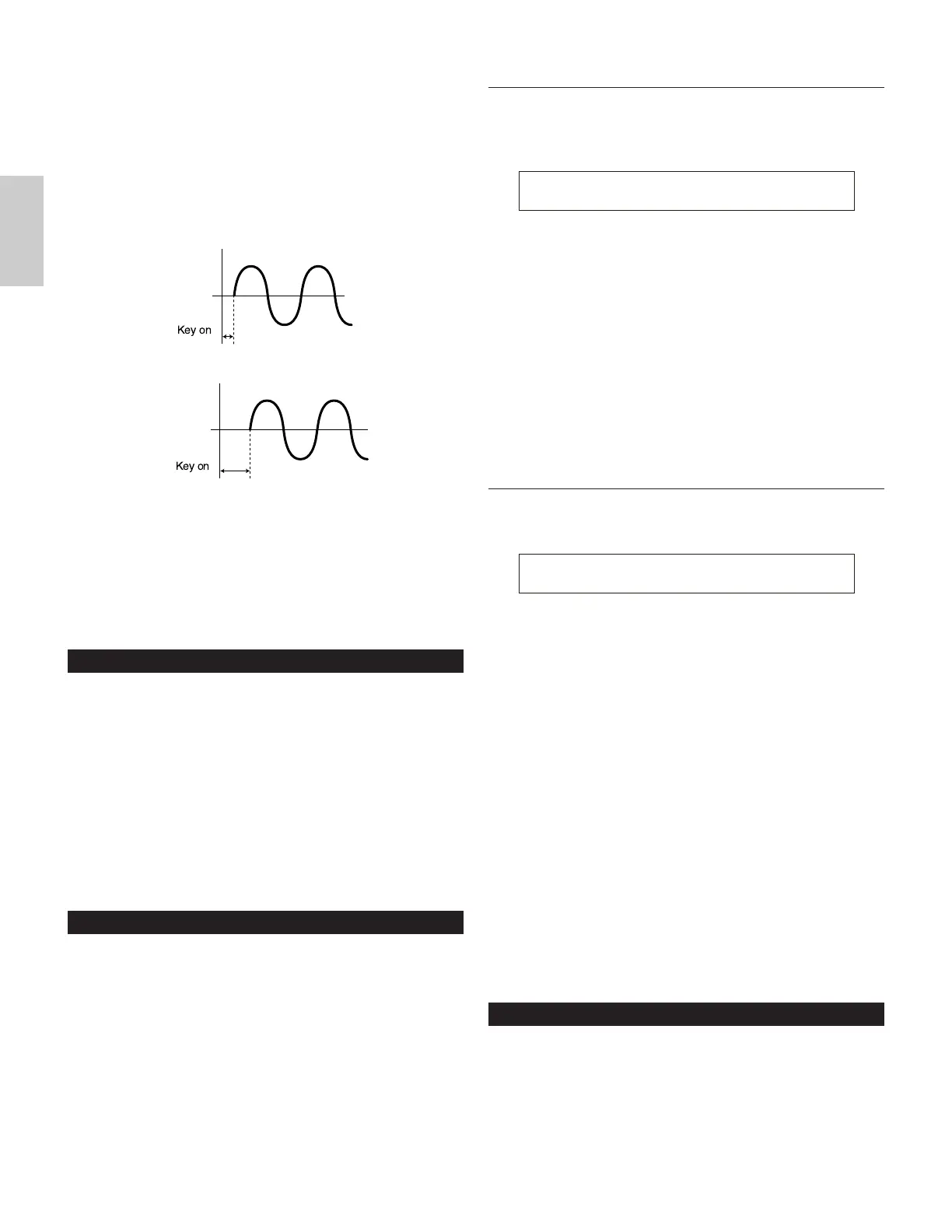OSC Assign (Oscillator Assign)
You can select the Board Voice that make up the
Element in a Plug-in Voice. Use Knob [C] to select the
Bank and Knob [1] to select the Board Voice.
■ Bank
Select the Board Voice Bank of the Plug-in Voice.
❏ Settings: (Depends on the Plug-in Board. Refer to the
Owner’s Manual for your Plug-in Board.)
■ Number
Select the Board Voice Number. The Board Voice
Name is displayed to the right of this number.
❏ Settings: (Depends on the Plug-in Board. Refer to the
Owner’s Manual for your Plug-in Board.)
OSC Velocity (Oscillator Velocity)
Here, you can set the velocity and note shift for the
Board Voice.
■ Depth
Set the velocity sensitivity of the Board Voice. If you
set a larger value, the volume increase will be greater
the harder you play the keyboard.
❏ Settings: 0 ~ 127
■ Offset
Set an offset value for the velocity sensitivity of the
Board Voice. When you press a note on the keyboard,
this offset value is added to the note velocity.
❏ Settings: 0 ~ 127
■ NoteSft (Note Shift)
Set the amount (in semitones) by which the pitch of
the Board Voice is shifted. You can set a value of up
to 2 octaves.
❏ Settings: -24 ~ 0 ~ +24
Plug-in Element Pitch
You can set the Pitch Envelope Generator parameters
for the Board Voice. The Pitch Envelope Generator
controls the change in pitch from the moment a note is
pressed on the keyboard to the moment it is released.
OSCíVelocity) Depth Offset NoteSft
Elem 127 0 -24
OSCíAssign) Bank Number
Elem NORM/001 128[GndPiano]
■ Delay
Set the delay time between the moment you press a
note on the keyboard and the moment the LFO
comes into effect. As shown in the illustration, a
positive setting will lengthen the delay and a
negative setting will shorten it.
❏ Settings: -64 ~ 0 ~ +63
Short Delay
Long Delay
■ PMod (Pitch Modulation Depth)
Set the amount by which the LFO waveform controls
the pitch. A positive setting will increase the
amount and a negative value will decrease it.
❏ Settings: -64 ~ 0 ~ +63
Plug-in Common Effect
In the following three screens, you can set the
parameters for the Insertion and System Effects used
by the Plug-in Voice. The parameters are the same as
for Normal Voices. The EFF EF1 (Insertion Effect)
parameter is the same as the EFF EF1 (Insertion Effect
1) parameter of the Normal Voices. Details are given
on Page 88.
EFF EF1 (Insertion Effect)
EFF Rev (Reverb)
EFF Cho (Chorus)
Plug-in Element OSC (Oscillator)
Here, you can set the Element-related parameters for
the Plug-in Voice. In the following two screens, you
can select the Element’s waveform, then it’s velocity
parameters.
OSC Assign (Oscillator Assign)
OSC Velocity (Oscillator Velocity)

